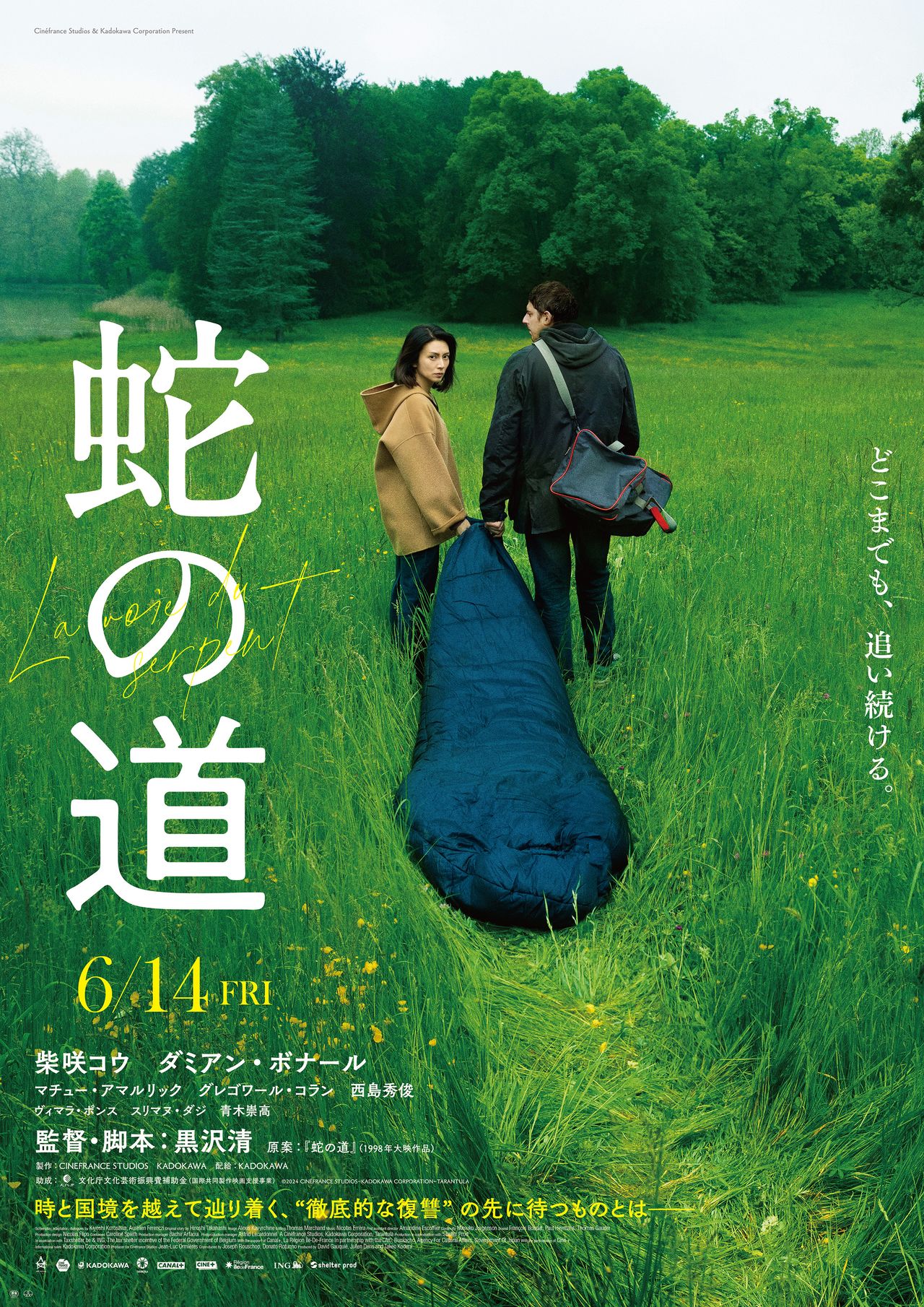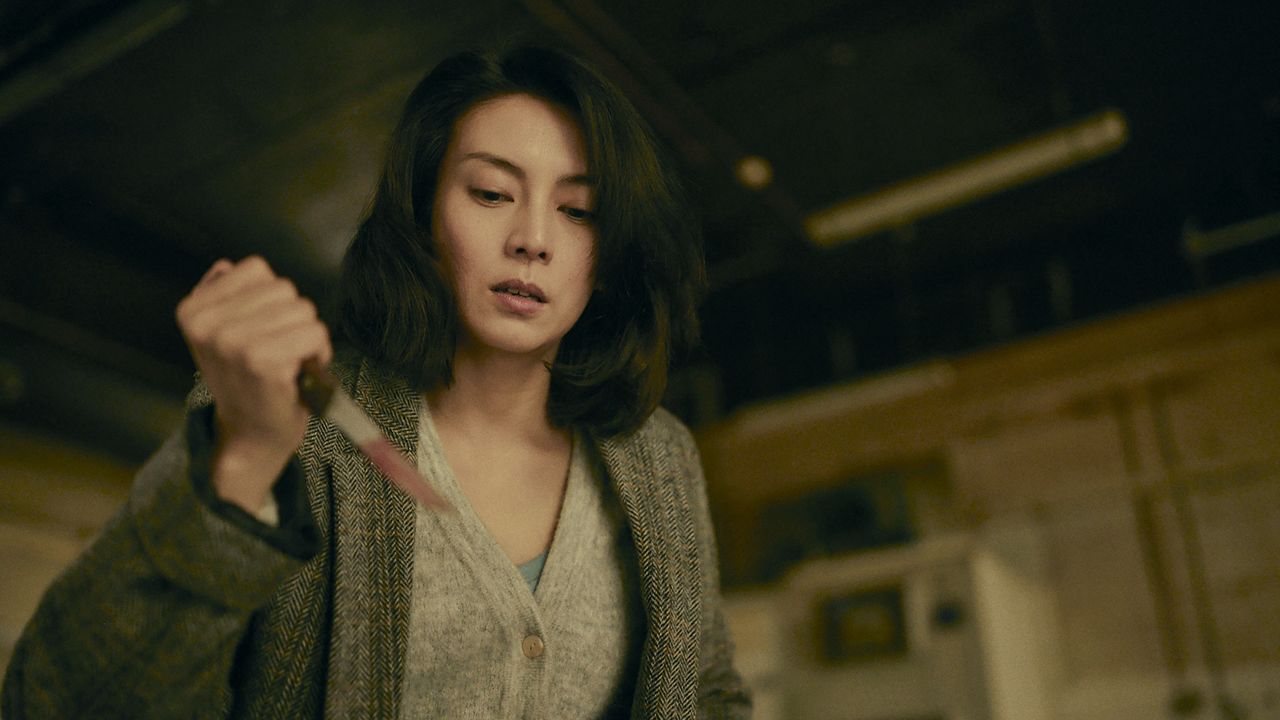
“Serpent’s Path”: Kurosawa Kiyoshi Remakes His Own Film in a French Setting
Cinema Culture- English
- 日本語
- 简体字
- 繁體字
- Français
- Español
- العربية
- Русский
Kurosawa Kiyoshi’s “V-Cinema” Heritage
The Japanese film director Kurosawa Kiyoshi won international acclaim when his previous film, Wife of a Spy, won the Silver Lion for Best Director at the 2020 Venice International Film Festival. Kurosawa is especially popular in France, where he is a regular at the Cannes International Film Festival and has taken home numerous awards.
Kurosawa’s French connections have been extremely fruitful of late. In 2016 he released Daguerrotype, filmed near Paris with a French and Belgian cast and crew. Five years ago, a French production company raised the idea of Kurosawa remaking one of his previous films in France. When asked which film, he immediately replied, Serpent’s Path.
Kurosawa—incidentally, no relation to the celebrated auteur Kurosawa Akira—made his directorial debut in 1983 with the erotic production Kandagawa Pervert Wars. Kurosawa did not attract worldwide attention, however, until 14 years later with his widely acclaimed Cure (1997). Around this time he was in the middle of an extremely productive period, making TV dramas and pumping out the B-movies known in Japan as “V-cinema,” mainly in the horror and gangster genres.
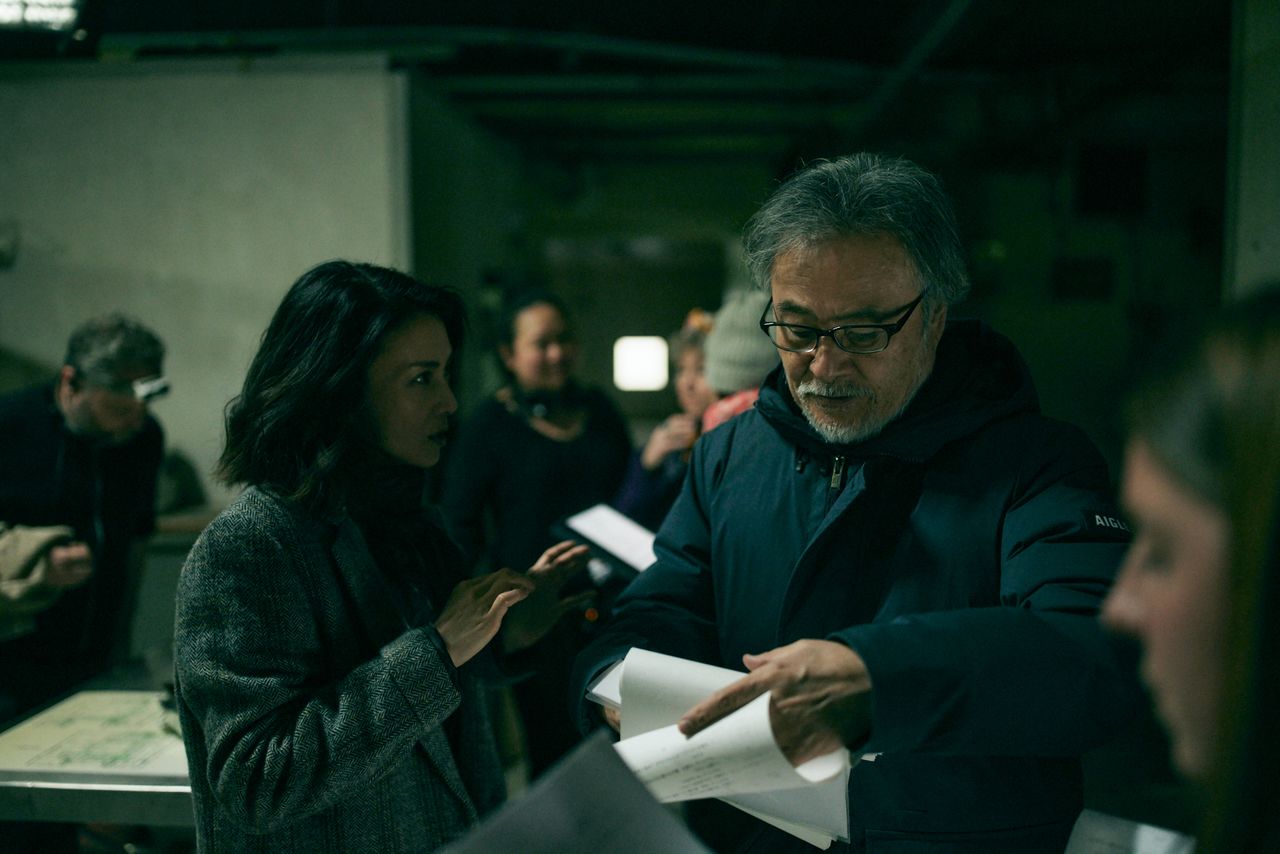
Director Kurosawa Kiyoshi and lead actress Shibasaki Kō on the set of Serpent’s Path. (© 2024 Cinéfrance Studios/Kadokawa Corporation/Tarantula)
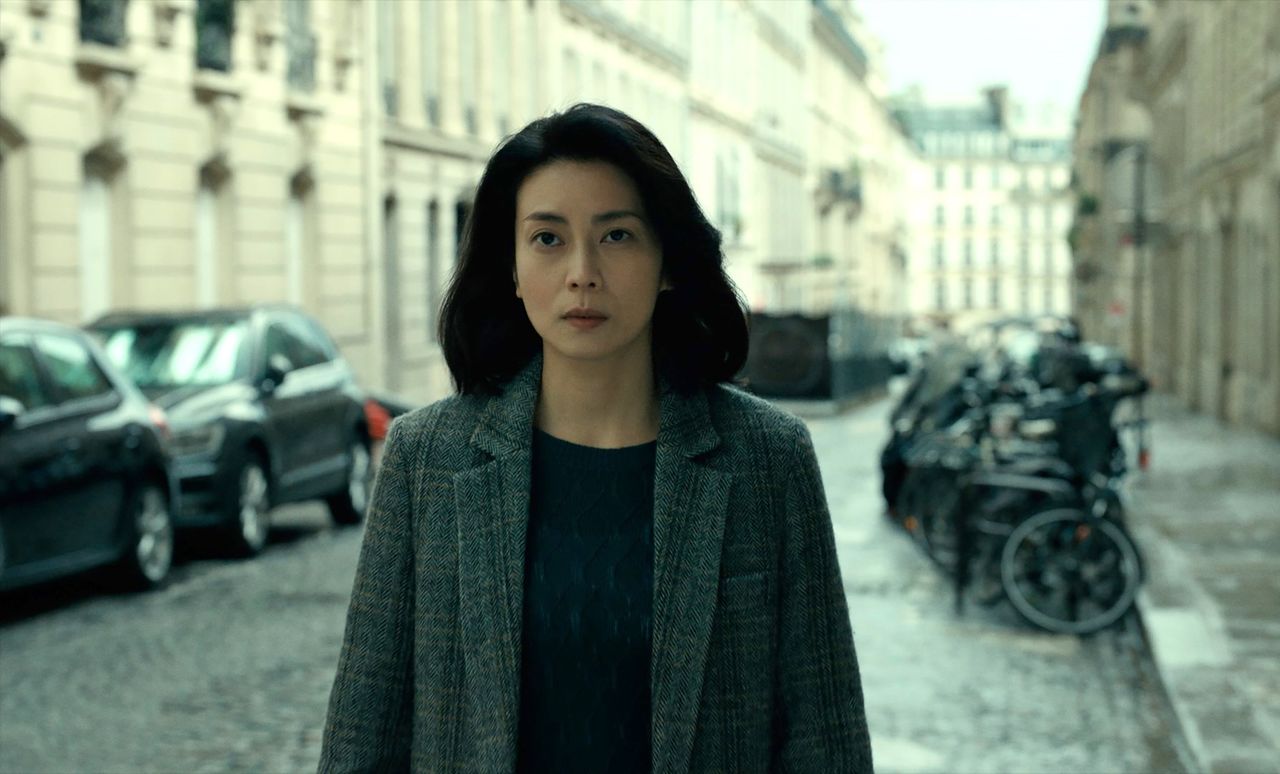
The 2024 version of Serpent’s Path opens on a normal residential street in Paris. (© 2024 Cinéfrance Studios/Kadokawa Corporation/Tarantula)
The original Serpent’s Path was made immediately after Cure together with Daiei Film, a major Japanese publisher. Although this collaboration with Daiei meant that Serpent’s Path had a theatrical release, Kurosawa positioned it as a continuation of his prior V-cinema productions.
A common thread between these films was that they feature Aikawa Shō, the “King of V-cinema.” The star of the six-film comedic Suit Yourself or Shoot Yourself series released in 1995 and 1996, Aikawa also featured in The Revenge, a more serious two-part outing in 1997. The 1998 Serpent’s Path, also starring Aikawa, was in effect an extension of the latter series.
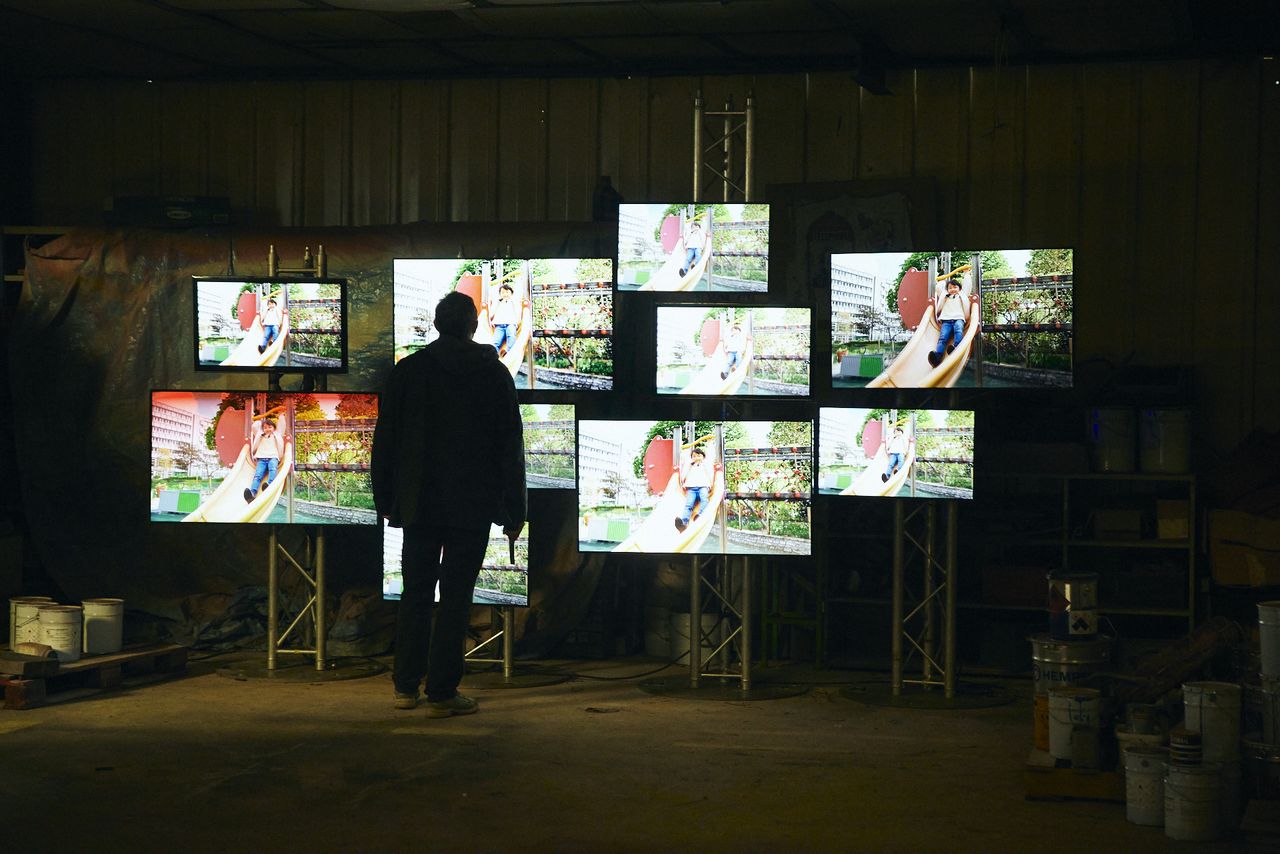
One of the many scenes in the 2024 version inspired by the original Serpent’s Path. (© 2024 Cinéfrance Studios/Kadokawa Corporation/Tarantula)
Serpent’s Path unfolds as a revenge thriller focused on a father whose young daughter was brutally murdered. This time, Aikawa does not play the vengeful father, but rather a character named Niijima who lends a helping hand to Miyashita (Kagawa Teruyuki) in his pursuit of payback for his daughter’s death.
In the suburbs of Tokyo, Niijima and Miyashita attempt to uncover the real culprits by abducting suspects one after another, confining them in a warehouse, and torturing them. While Miyashita seems unsure of himself, Niijima is cool-headed and enigmatic. In between torture sessions, Niijima rides his bicycle from the warehouse to the classroom where he teaches advanced mathematics, at a cram school in a shopping district near the local train station.
An All-New Niijima for 2024
Rather than Tokyo, the 2024 remake of Serpent’s Path is set in Paris and its suburbs. The father of the murdered daughter is a Frenchman named Albert Bachelet (Damien Bonnard). Following on from the theme of the original version, the aggrieved father is somewhat erratic and a foil for the cool-headed helper. Unlike Kagawa, an actor with a kabuki background who played the Miyashita role in the original, Bonnard is a large man who lacks agility and even appears clumsy. Bonnard still portrays the character as similarly timid and lost, however.
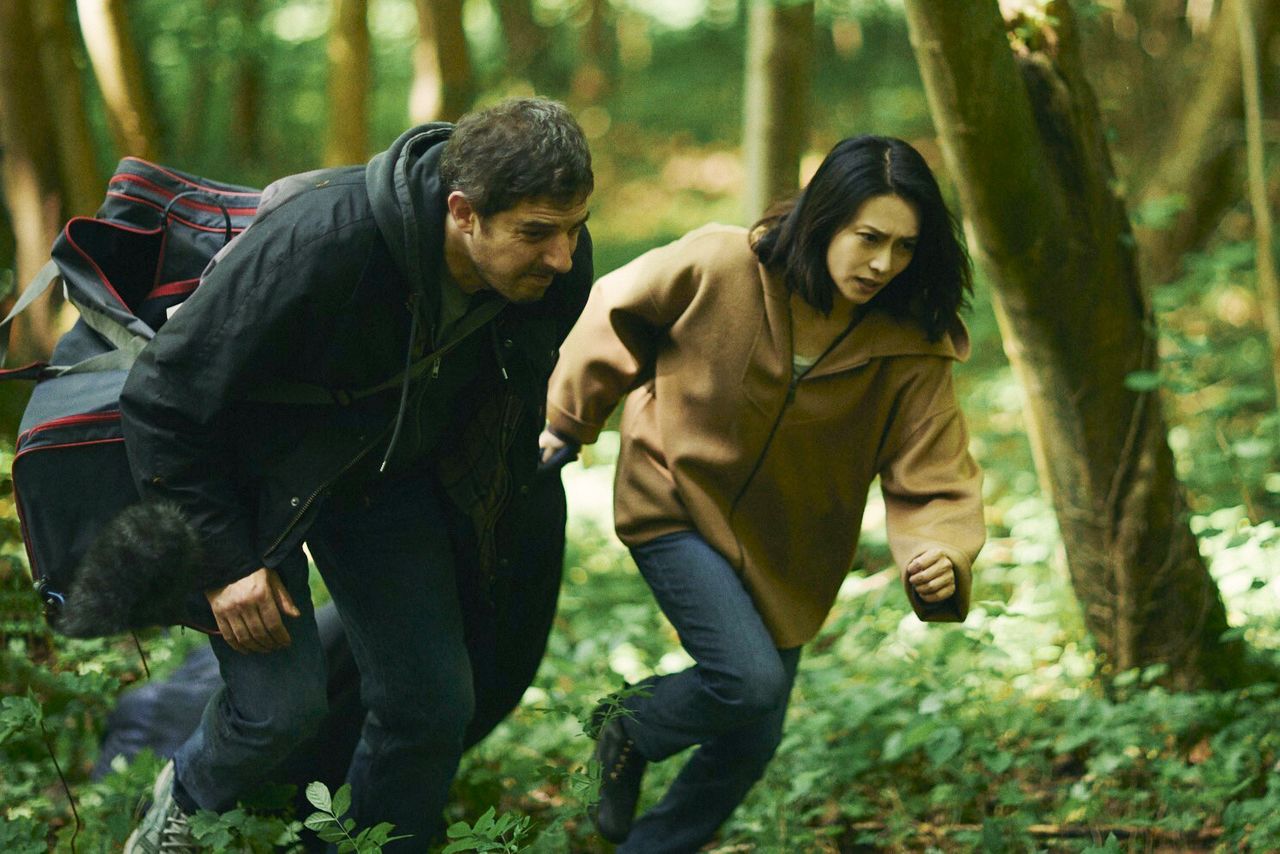
Damien Bonnard, at left, plays Albert Bachelet. Bonnard was nominated for a César Award for Best Actor for the 2019 Les Misérables, Ladj Ly’s directorial debut. (© 2024 Cinéfrance Studios/Kadokawa Corporation/Tarantula)
In the 2024 remake, the character who assists in retribution is still a Japanese person named Niijima. This time, however, the character is a woman, Niijima Sayoko. Played by Shibasaki Kō, Sayoko is a Japanese psychiatrist working at a hospital in Paris. This represents the biggest divergence from the original.
Shibasaki uses French throughout the film with only a couple of exceptions. One is when she examines a Japanese patient named Yoshimura (Nishijima Hidetoshi) who has become mentally ill while on assignment in Paris. Another is when she talks remotely online to her husband, Sōichirō (Aoki Munetaka). Shibasaki speaks in short, simple phrases without much inflection throughout the film, communicating her character’s cool-headed and detached demeanor.
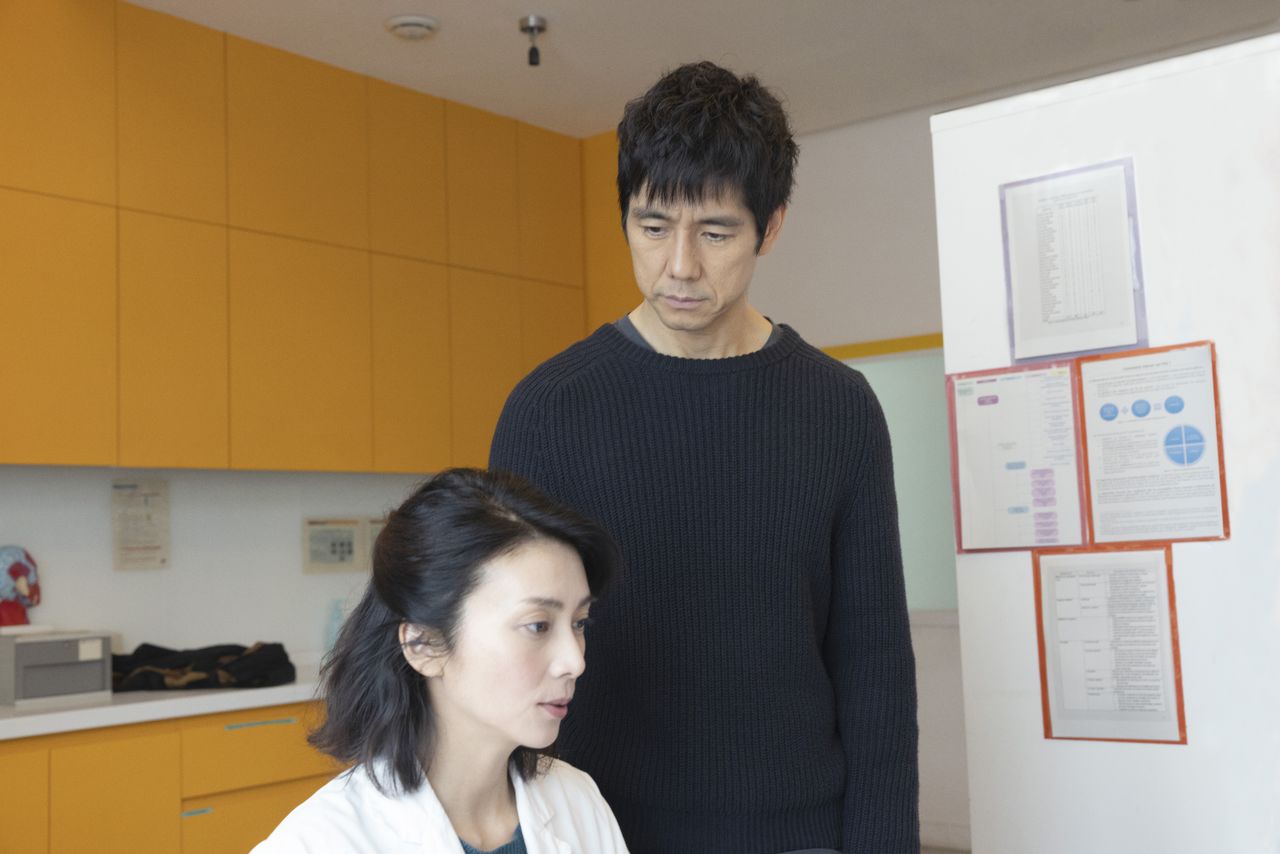
Nishijima Hidetoshi, standing, plays the role of Yoshimura, a patient treated by Sayoko. This is his fifth appearance in a Kurosawa film. (© 2024 Cinéfrance Studios/Kadokawa Corporation/Tarantula)
This ensures that Serpent’s Path is not a traditional French conversational drama laden with dialogue. Nevertheless, when events occur abruptly, brief exchanges of words cleverly assist our understanding of the film’s events without artificial exposition. Despite the simplicity of the story, the audience is drawn in by the action and Kurosawa’s cinematic skills which includes various elements adopted from the original version.
In the original version, it turns out that underworld forces were involved in the murder of the daughter. In the remake, a shadowy charitable foundation emerges as the organization response for this and other horrific crimes. Its former treasurer Laval (Mathieu Amalric) and executive Pierre Guérin (Grégoire Colin) become Albert’s and Sayoko’s targets.
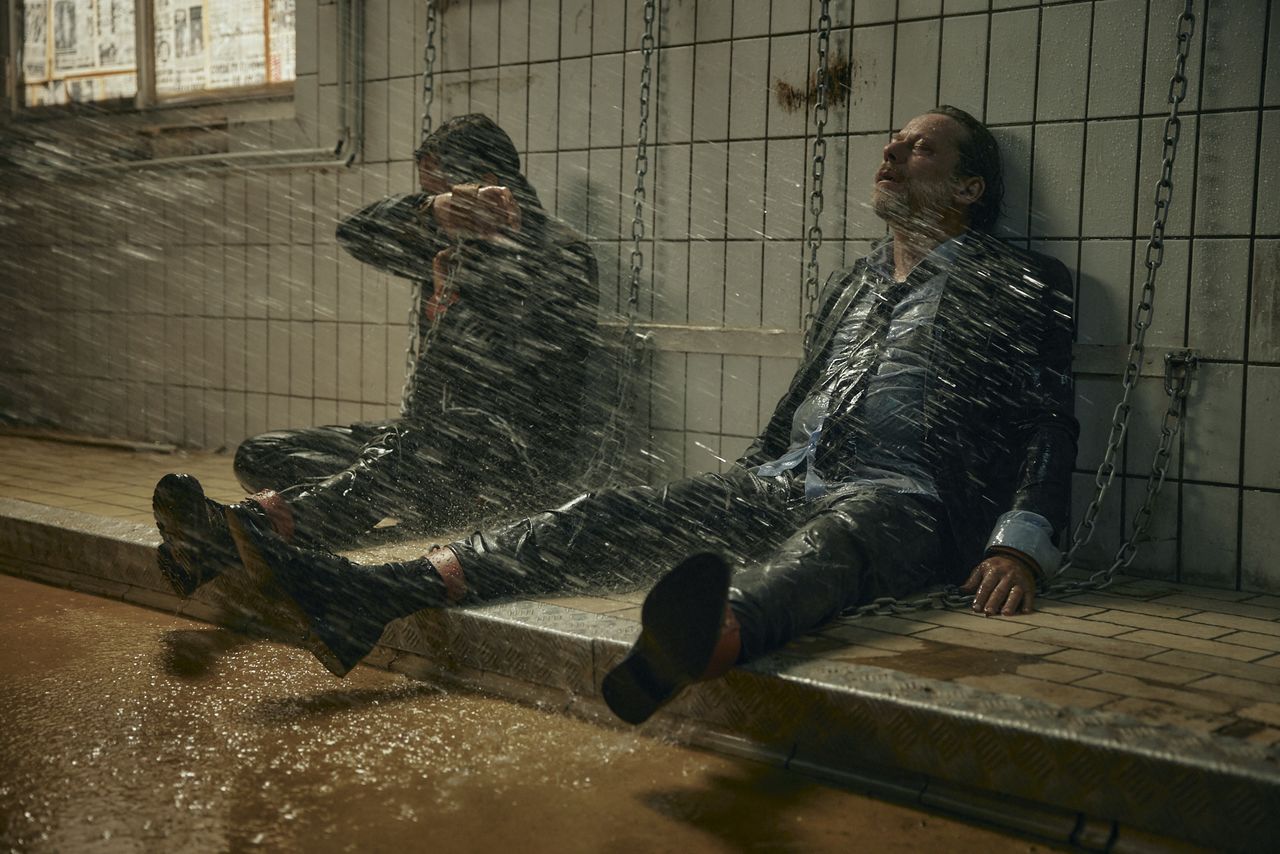
Serpent’s Path features some of France’s finest actors in powerful performances. Laval (Mathieu Amalric, right) and Guérin (Grégoire Colin) are kidnapped and chained up. (© 2024 Cinéfrance Studios/Kadokawa Corporation/Tarantula)
In the new, modernized setting Kurosawa portrays a depth of darkness that reflects a twenty-first-century zeitgeist. As he explores the characters’ mindsets and their deceptions towards themselves and others, there is a depth to the human drama that was not present in the original.
Franco-Japanese Film’s Lengthy History
The original Serpent’s Path was written by Takahashi Hiroshi, who had worked together with Kurosawa on prior V-cinema productions like The Revenge. Kurosawa himself adapted the original script to his liking for the remake, changing some parts while inheriting many other elements. Because the new script was effectively Kurosawa’s own work, he was able to make intuitive choices without much deliberation when deciding on changes. The choices do not seem forced, and Kurosawa maintains a perfect balance that gives the movie a sense of inevitability.
This is the essence of Kurosawa’s cinematic technique, which has evolved over time while also maintaining its continuity. The French climate, environment, cast, and crew are responsible for some of the new elements that emerged. These, however, ultimately add to the experience. This film effectively demonstrates filmmaking’s nature as an art built around responding flexibly to the needs of the moment, producing the desired cinematic outcomes one by one in a series of decisions leading inexorably to the final work.
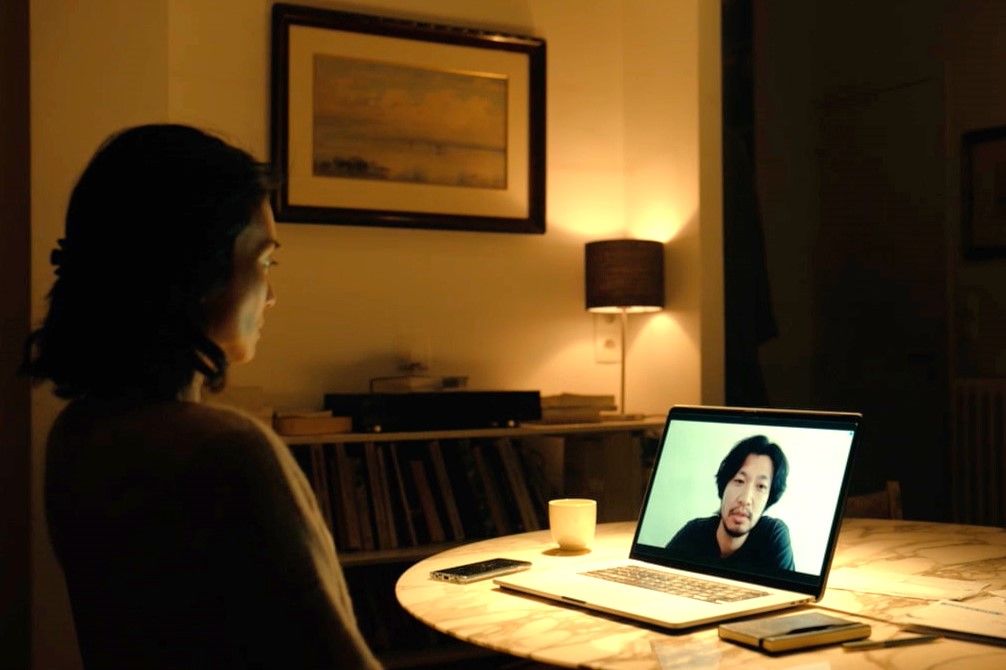
The main character has a spouse, which differs from the original. The fact that Sayoko remotely talks to her husband (Aoki Munetaka) in Japan is an example of how the film portrays a modernized setting. (© 2024 Cinéfrance Studios/Kadokawa Corporation/Tarantula)
Watch the two Serpent’s Path films, separated by 26 years and a continent, and you experience the pleasure of reflecting on Kurosawa’s different sides—seeing how he has changed and evolved, but also what has remained constant as the foundation of his work.
The remake is, nevertheless, thoroughly enjoyable on its own. Immersion in the sound and imagery will place the viewer in the middle of 113 minutes of unsettling atmosphere.
Viewers may also want to reflect on the interconnections between the Japanese and French film industries. For almost a century, both industries have demonstrated a commitment to creativity, and there are numerous shared thematic passions. While not necessarily frequently, filmmakers in both countries have exchanged knowledge and nurtured both direct and indirect friendships. Kurosawa has been at the center of this exchange in recent times; earlier in 2024 he was appointed an officer in the French government’s Ordre des Arts et des Lettres. The 2024 Serpent’s Path represents a new milestone in the creative relationship, hopefully foreshadowing the start of a new fruitful and cooperative relationship between the two industries.
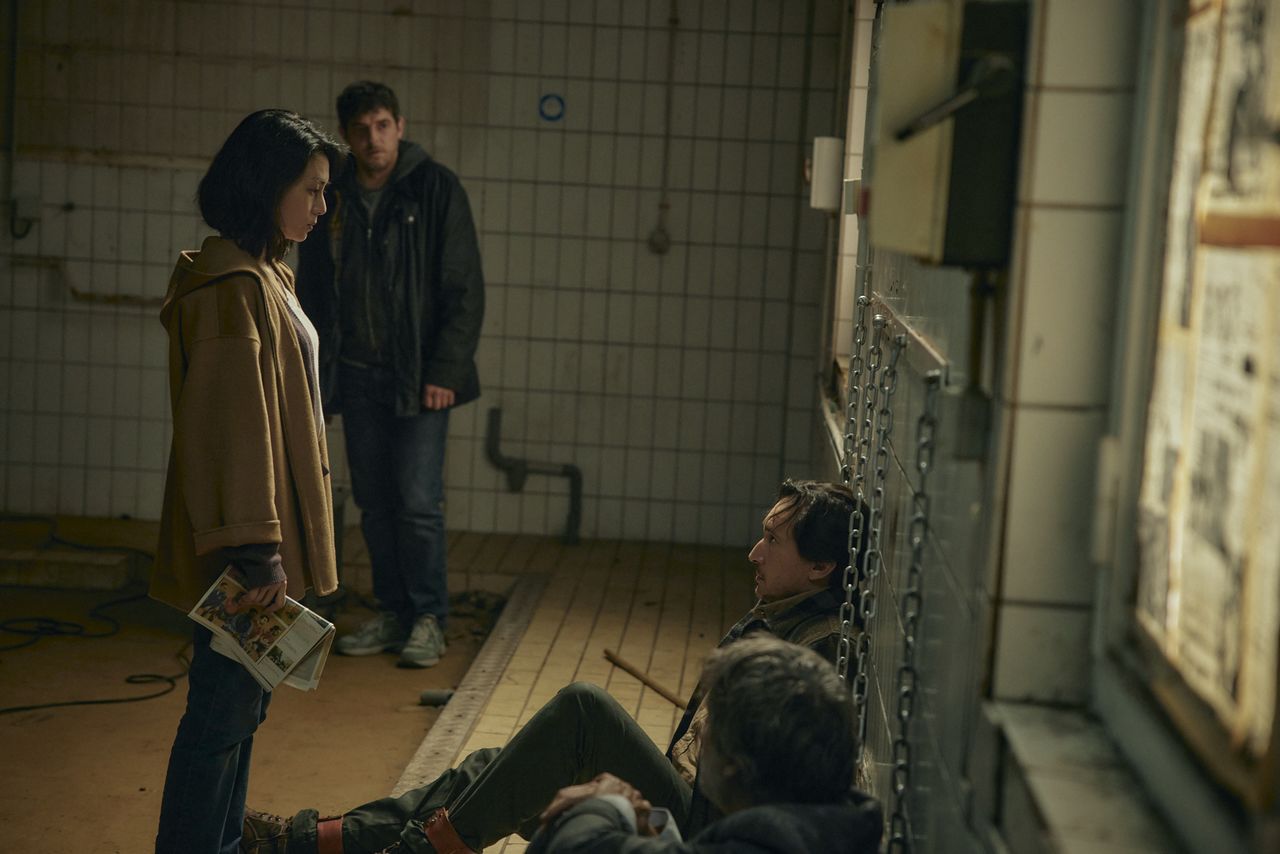
With her “snake eyes,” Sayoko silences the executive who once ran the shadowy foundation that the protagonists believe is involved in the murder. (© 2024 Cinéfrance Studios/Kadokawa Corporation/Tarantula)
Movie Trailer
(Originally published in Japanese. Banner photo: Shibasaki Kō stars in the 2024 version of Serpent’s Path, a French-Japanese-Belgian-Luxembourg collaboration directed by Kurosawa Kiyoshi. © 2024 Cinéfrance Studios/Kadokawa Corporation/Tarantula.)

